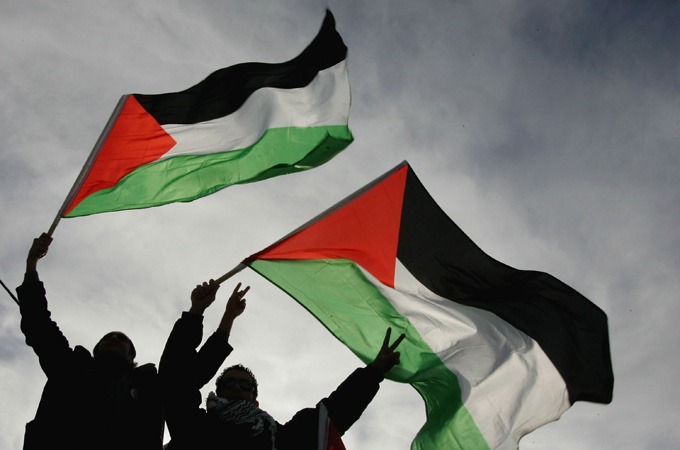
The Palestinian flag is many ways, similar to the flags of other Arab nations. It consists of a black, white, and green horizontal stripe, with a red triangle based at the end. The flag of Jordan, the neighboring kingdom to the east, is identical, but with a white star on the red triangle. The flag of the United Arab Emirates also looks similar, the only difference being that the red section is brighter and rectangular rather than triangular.
There is a reason for these similarities. Most national flags of Arab nations derive their design from the flag of the Arab Revolt. In World War One, Arab nationalists, led by Hussein bin Ali, the Sharif of Mecca, staged a rebellion against the Ottoman Empire. Though their British allies had promised them their own Arab state if they fought the Turks, most of the Middle East ended up becoming British or French colonies after the war. When Arab countries finally began winning their independence after World War Two, they adopted variations of the flag that they had used to overthrow their Turkish rulers.
The Pan-Arab colors, green, white, red, and black, each represents a different Caliphate. The red represents the Hashemite dynasty, which used to rule Iraq and the province of Hejaz, which is now a province of Saudi Arabia. Abdullah II, the King of Jordan, is a member of the Hashemite family.
For years, Palestinians lived under the flags of different nations. After the 1948 Arab-Israeli War, most of British Palestine became the State of Israel, represented by a blue Star of David and two blue stripes on a white background. The West Bank was annexed by the Kingdom of Jordan, and the Gaza Strip was administered by Egypt. Egypt went through different flags while it administered Gaza, the flag of the Kingdom of Egypt was replaced when the Free Officer’s Movement overthrew the monarchy in 1953. In 1958, Egypt and Syria formed a brief, three-year union, creating the United Arab Republic, using the present-day flag of Syria.
After 1967, when Israel conquered the West Bank and Gaza, the Israeli authorities banned the Palestinian flags, and for years would imprison anyone caught even using the Pan-Arab colors in artwork. When the Oslo Accords were signed in 1993, those restrictions were lifted, and Palestinians were once again free to display their flag.
Today, Palestinians remember the years their identity was suppressed and their freedoms curtailed, and celebrate the freedom they now have to display their flag and celebrate their heritage.


